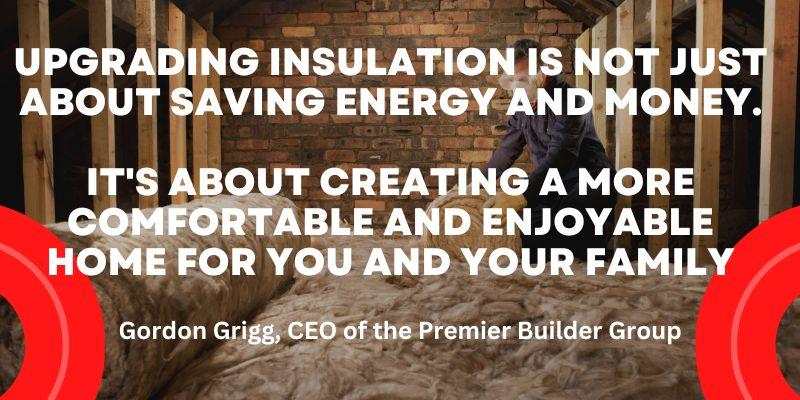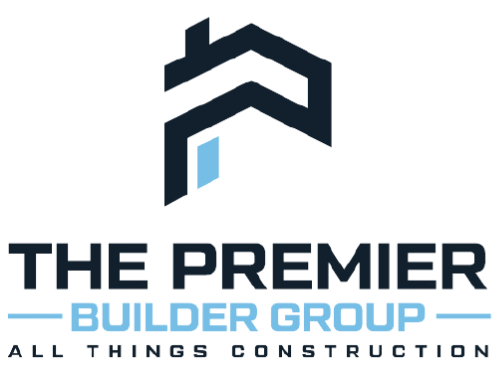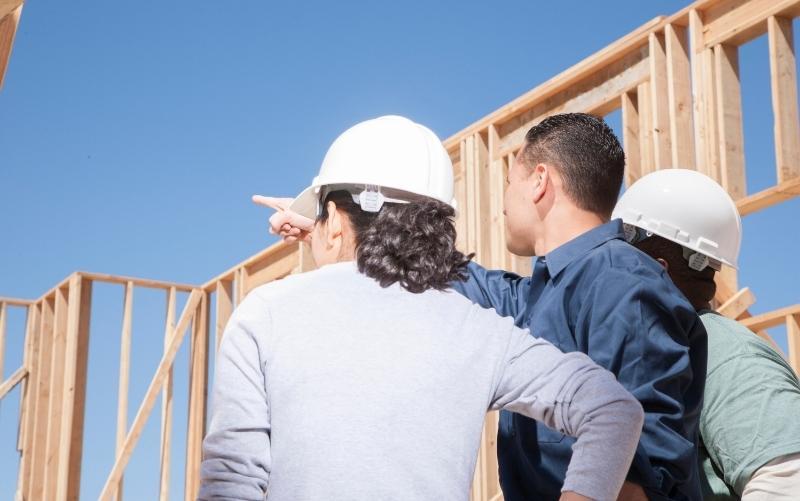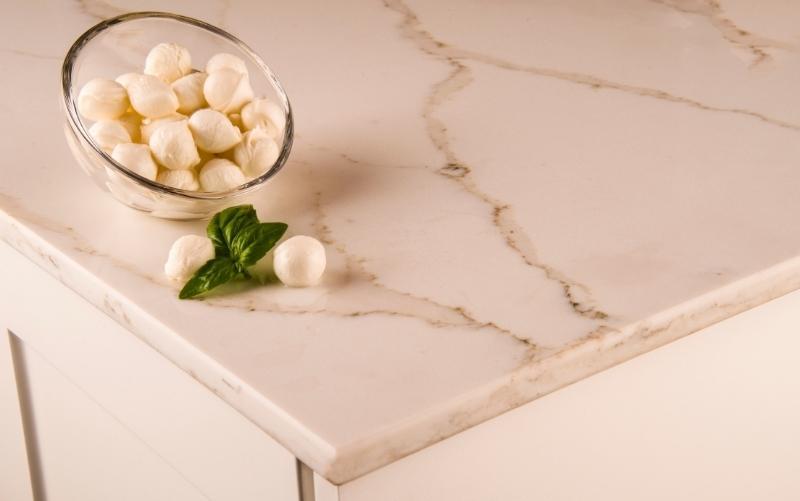Upgrading the insulation in your home is critical to maintaining a comfortable and energy-efficient home. Upgrading insulation helps reduce energy consumption, lower costs, and improve overall comfort.
My name is Gordon Grigg. I am the CEO and founder of The Premier Builder Group. This blog post will discuss why upgrading insulation is a good idea and answer some common questions about the process.
Importance of proper insulation
The importance of proper insulation cannot be overstated.
If your home lacks insulation, drafts, leaks, and heat loss can happen. This can be uncomfortable and cause you to use more energy.
Insulation acts as a barrier that stops heat from moving from the inside of your home to the outside.
This helps maintain a consistent temperature, reducing the need for constant heating or cooling.
Benefits of upgrading insulation

There are several benefits to upgrading the insulation in your home:
Energy efficiency: upgrading your insulation helps minimize heat loss or gain, making your home more energy-efficient. This makes your heating and cooling systems work less hard and use less energy.
Cost savings: By improving energy efficiency, upgraded insulation can result in significant cost savings. When you use less energy, your utility bills go down, which gives you a return on your investment over time. The payback period for insulation upgrades will vary depending on factors such as the size and location of your home and the type of insulation used.
Comfort: A well-insulated home maintains a more consistent temperature, reducing drafts and cold spots. This creates a comfortable living environment for you and your family.
Environmental impact: By reducing energy consumption, upgrading insulation contributes to a smaller carbon footprint. This benefits the environment by reducing greenhouse gas emissions.
Types of Insulation
When upgrading the insulation in your home, understanding the various types of insulation available is essential.
Each type of insulation has the unique properties that make it better for specific uses.
A. Fiberglass Insulation

Fiberglass is a popular insulation material made from fine strands of glass fibers. It comes in batts or rolls and is commonly used for insulating attics, walls, and floors.
Fiberglass insulation is a good choice for many homeowners because it is inexpensive and easy to put in.
But it might not be the best at keeping air out, and if it’s not installed right, it could have problems with moisture.
B. Cellulose Insulation

Cellulose insulation is made from recycled paper, usually newsprint, and treated with fire-retardant chemicals.
It is an eco-friendly option that provides excellent thermal performance and soundproofing.
Cellulose can be blown into walls, attics, and floors, filling gaps and voids to create a tight seal.
Its higher density makes it resistant to air leaks but can be more expensive than fiberglass insulation.
C. Spray Foam Insulation

Spray foam insulation is famous for its ability to expand and fill gaps, cracks, and hard-to-reach areas.
It comes in two types: open-cell and closed-cell foam. Both types are good at keeping air and moisture out, but closed-cell foam has a higher R-value and better supports the structure.
Spray foam insulation can be more expensive than other options, but it usually gives a better return on investment because it saves energy.
D. Mineral Wool Insulation

Mineral wool, also known as rock wool or slag wool, is made from molten rock or industrial waste spun into fibers.
It comes in batts or loose-fill forms and is known for its excellent fire resistance and soundproofing qualities.
Mineral wool insulation is easy to install and keeps heat in well, but it can cost more than fiberglass insulation.
E. Rigid Foam Board Insulation

Rigid foam board insulation is made from various materials, such as polystyrene, polyurethane, or polyisocyanurate.
It comes in sheets of varying thicknesses and provides high R-values, making it ideal for insulating roofs, walls, and foundations.
Also, rigid foam boards are very resistant to moisture and can be used with other insulation materials to improve how well they keep heat in.
However, they may require professional installation and be more expensive than other options.
F. Comparing Insulation Materials and Their R-values
R-value is a measure of an insulation material’s resistance to heat flow. A higher R-value indicates better insulating properties. Here’s a comparison of the R-values for different insulation materials:
Fiberglass: R-2.9 to R-3.8 per inch
Cellulose: R-3.2 to R-3.8 per inch
Open-cell spray foam: R-3.5 to R-3.6 per inch
Closed-cell spray foam: R-6 to R-7 per inch
Mineral wool: R-3.0 to R-3.3 per inch
Rigid foam board: R-3.8 to R-8 per inch (depending on the material)
What type of insulation is best for upgrading your home?

Selecting the best insulation for your home depends on its location, size, existing insulation, and budget.
For example, if air leaks and moisture resistance are major concerns, spray foam insulation might be the best option.
On the other hand, if you are looking for an eco-friendly option with good thermal performance and soundproofing, cellulose insulation could be the right choice.
When upgrading insulation, it’s important to think about your home’s needs and talk to a professional to get personalized suggestions.
They can assess your home’s unique requirements and help you choose the most suitable insulation type to maximize energy savings, comfort, and return on investment.
Identifying Areas for Insulation Upgrades
Upgrading insulation in your home is an essential step toward improving energy efficiency and comfort. However, knowing where to focus your efforts can be challenging.
Insulation Audit
An insulation audit is a thorough look at your home’s insulation to find where it could be better.
Usually, this is done by having a professional look at the insulation in the attic, walls, floors, basements, crawlspaces, and around windows and doors.
The audit could also include a blower door test to find air leaks and a thermal imaging assessment to find places where the temperature is different in your home.
Common Problem Areas

Attics: Heat rises, making attics a primary source of heat loss in most homes. Upgrading the attic’s insulation can significantly improve energy efficiency and reduce heating and cooling costs.
Walls: Insufficient insulation in walls can result in heat loss and drafts. Upgrading the insulation in your walls can make your home more comfortable and use less energy.
Floors: Poorly insulated floors can lead to heat loss and cold drafts, particularly in homes with basements or crawlspaces. Upgrading floor insulation can improve comfort and energy efficiency.
Basements and crawlspaces: Insulating basements and crawlspaces can help keep heat from escaping, reduce moisture problems, and make your home more energy efficient.
Windows and doors: Gaps and leaks around windows and doors can lead to drafts and increased energy consumption. Sealing these gaps with caulk, expanding foam, or weather stripping can improve insulation and cut down on energy loss.
Detecting Leaks and Determining if You Need to Upgrade Insulation in Your Homes are crucial in determining if insulation upgrades are necessary. Some signs that your insulation may need upgrading include:
- Uneven temperatures throughout the home
- Drafts or cold spots near windows, doors, and walls
- High energy bills
- Ice dams on the roof during winter
A professional insulation audit can provide valuable insight into your home’s insulation needs. This can help you find problem areas and decide which ones to fix first to save the most money on energy and get the most out of your investment.
How do you know if you need an insulation upgrade in your home?
The best way to determine if your home requires insulation upgrades is to conduct an insulation audit, either by yourself or with the help of a professional.
By looking at the insulation in your home and figuring out where the problems are, you can decide where to put your efforts.
Choosing the Right Insulation for Your Home

Upgrading the insulation in your home can lead to significant energy savings, increased comfort, and more environmentally friendly living space.
But to choose the right insulation for your home, you need to think about your home’s needs, budget, climate, and environmental impact.
Assessing Your Home’s Needs
Before selecting insulation, evaluate your home’s specific requirements.
This could mean doing an insulation audit to find places like attics, walls, floors, and around windows and doors where improvements can be made.
Also, think about any problems with air leaks, moisture, or existing insulation that could affect your type of insulation.
Budget Considerations
The insulation materials and installation costs can vary greatly, so it’s important to consider that when planning your budget.
While some insulation types, like fiberglass, are relatively inexpensive, others, like spray foam, may have a higher upfront cost.
However, it’s crucial to consider the long-term energy savings and return on investment each insulation type may provide, as a more expensive option could yield greater savings over time.
Climate and Regional Factors
The climate and location of your home can also greatly impact what kind of insulation will work best.
In colder climates, insulation materials with a higher R-value may be more useful, while in warmer areas, insulation that blocks radiant heat well may be more important.
Also, some types of insulation work better for certain tasks, like insulating roofs, floors, or walls.
Environmental Impact
Choosing eco-friendly insulation materials for homeowners concerned about their environmental footprint can help reduce energy consumption and promote sustainability.
Some environmentally friendly insulation options include cellulose (made from recycled paper) and mineral wool (made from molten rock or industrial waste).
These materials can provide excellent insulation performance while minimizing environmental impact.
What kind of insulation should you use in your attic?

The best insulation for your attic will depend on a number of things, such as your home’s needs, your budget, the weather, and your environmental preferences. Some popular attic insulation options include:
Fiberglass: Affordable, easy to install, and suitable for most climates, but it may not provide the best air sealing.
Cellulose: Eco-friendly, offers excellent thermal performance and soundproofing, but can be more expensive than fiberglass.
Spray foam: Provides superior air sealing and moisture resistance but comes with a higher upfront cost
The Cost and Time Involved in Upgrading Insulation

Upgrading insulation in your home is an investment that can result in significant energy savings and increased comfort. However, many homeowners may question the cost and time involved in this process.
Factors Affecting the Cost of Upgrading Insulation
Several factors can influence the cost of upgrading the insulation in your home, including:
The type of insulation material: Insulation materials vary in cost, with options like fiberglass and cellulose being more affordable than spray foam or rigid foam board.
The size of the area that needs to be insulated: Larger areas will need more insulation materials, raising the price.
The R-value required: Higher R-value insulation may be more expensive but can provide better energy savings.
Labor costs: Having a professional do the installation can add to the cost, but it usually ensures that it is done right and uses the least energy.
Location: The insulation materials and labor costs may vary depending on your location.
Payback Period and Return on Investment

When upgrading insulation, the payback period is the time it takes for the energy savings to make up for the initial investment.
The return on investment (ROI) is the percentage of the original investment recouped through energy savings over time.
Factors such as the type of insulation, energy prices, and the home’s specific energy efficiency improvements will impact the payback period and ROI.
In general, insulation upgrades that cost more up front may take longer to pay for themselves, but they may save you more money in the long run.
How much does it cost to upgrade the insulation in your house?
The cost to upgrade the insulation in your house will depend on the factors mentioned earlier, such as the type of insulation, the size of the area to be insulated, and labor costs.
On average, homeowners can expect to spend anywhere from $1,000 to $5,000 on insulation upgrades.
To get an accurate estimate for your project, you need to get multiple quotes from insulation professionals.
How long does it take to upgrade the insulation in my home?
The time it takes to upgrade the insulation in your home will depend on the size of the project, the type of insulation installed, and any additional work needed, such as sealing air leaks or repairing drywall.
Generally, upgrading the insulation in an attic can take a few hours to a couple of days, while insulating walls or floors may require more time.
DIY Insulation Upgrades vs. Hiring a Professional
Upgrading the insulation in your home can lead to significant energy savings, increased comfort, and more environmentally friendly living space.
Homeowners may want to do their own insulation upgrades, but there are a few things to think about when deciding whether to do it themselves or hire a professional.
Assessing Your Skills and Knowledge

Before embarking on a DIY insulation upgrade, evaluating your skills and knowledge is crucial.
Installing insulation can be difficult, requiring knowledge of insulation materials, methods, and building codes.
Suppose you lack experience or are unsure about any aspect of the project.
In that case, it might be better to hire a professional to ensure the system is installed correctly and saves the most energy possible.
Safety Concerns
Upgrading insulation involves working in confined spaces, such as attics or crawlspaces, and handling materials like fiberglass, foam, or cellulose, which can pose safety risks.
Additionally, proper safety gear, such as gloves, masks, and eye protection, is necessary to avoid injuries or respiratory issues.
If you are not confident in your ability to safely complete the project, hiring a professionally trained and experienced insulation installation may be wise.
Time and Cost-Effectiveness
Even though doing insulation upgrades yourself can save money on labor costs, it’s important to consider the time it will take and the risks of a bad installation.
A professional insulation contractor may be able to finish the job faster and save the most energy possible, which can make up for the higher cost up front.
Furthermore, professionals have access to specialized equipment and bulk insulation materials, which can result in a more cost-effective project overall.
Finding a Reputable Insulation Contractor

Suppose you decide to hire a professional for your insulation upgrade. In that case, finding a reputable contractor with experience with the insulation materials and methods your project needs is important. To find a qualified contractor:
Seek recommendations from friends, family, or online reviews.
Verify the contractor’s credentials, such as licensing and insurance.
Request references and ask about the contractor’s experience with similar projects.
Obtain multiple quotes to compare pricing and services offered.
Additional Considerations and Benefits
When upgrading insulation in your home, it’s essential to consider the energy savings and increased comfort and the additional benefits and potential risks associated with the project.
Will Upgrading Insulation Make My Home Quieter?
One often overlooked benefit of upgrading insulation is that it can reduce noise from inside and outside.
Proper insulation can create a sound barrier that helps dampen noise, making your home quieter and more comfortable.
Even though insulation may not be able to completely stop noise, it can make a big difference, especially when used with other soundproofing methods like double-paned windows and solid doors.
Are There Any Risks Associated with Upgrading Insulation?

Upgrading insulation can be risky if it’s not done right or if the wrong materials are used.
Some of these risks include:
Moisture problems: Improper installation can lead to moisture buildup, which can cause mold growth, rot, and damage to your home’s structure.
Some insulation materials, like foam, can catch fire if they aren’t put in the right way or exposed to high temperatures.
Health concerns: Certain insulation materials, like fiberglass, can cause respiratory issues if not handled and installed properly.
To reduce these risks, following the manufacturer’s instructions, following local building codes, and talking to a professional when needed is important.
Recommendations for Sealing Gaps and Using Caulk, Plastic Bags, and Other Materials
In addition to upgrading your insulation, you should also look at other ways your home loses energy.
For example, sealing gaps and using materials like caulk, plastic bags, and expanding foam can help improve your home’s energy efficiency.
Some recommendations include:
Seal gaps around windows and doors with caulk or weather stripping.
Use plastic bags or plastic film to cover windows and add insulation during the colder months.
Apply expanding foam around plumbing and electrical penetrations to reduce drafts.
Inspect and seal the drywall, floor, and roof gaps to prevent air leaks.
Are there any risks associated with upgrading the insulation?
As we’ve already talked about, upgrading insulation can pose risks, such as problems with moisture, fire hazards, and health issues.
But these risks can be kept to a minimum if you follow the instructions for installation, use the right materials, and talk to a professional when needed.
Conclusion
Recap of the Benefits of Upgrading Insulation

Upgrading the insulation in your home can lead to numerous benefits, including:
Improved energy efficiency: Better insulation helps reduce energy consumption, leading to lower utility bills.
Increased comfort: Good insulation can help keep your home’s temperature more even, which makes it more comfortable overall.
Noise reduction: Insulation can help dampen noise transmission between rooms and from outside sources, making your home quieter.
Encouragement to Take Action for a More Energy-Efficient Home
Investing in insulation upgrades can significantly impact your home’s energy efficiency and overall comfort.
By taking advantage of available rebates and tax credits, homeowners can make these upgrades more affordable and enjoy the long-term benefits of a well-insulated home.
Does upgrading insulation help save energy?
Yes, upgrading the insulation does help save energy.
Proper insulation keeps heat from moving in and out of your home, so your heating and cooling systems don’t have to work as hard. This saves energy and money on your utility bills.
If you’re looking for a cost-effective way to improve your home’s energy efficiency and comfort, upgrading your insulation is a great place to start.
With the benefits of lower utility bills, increased comfort, and noise reduction, it’s an investment that pays off in the long run.
And with available rebates and tax credits, it’s more affordable than ever to make these upgrades.
If you’re ready to build your dream home or remodel your space, The Premier Builder Group is the team to trust.
What is next?

With years of experience in the industry, they have the expertise to bring your vision to life with precision and attention to detail.
Don’t settle for a cookie-cutter home or an outdated space. Instead, let The Premier Builder Group create a custom design tailored to your unique needs and style preferences.
From concept to completion, our team will guide you through every step of the process, ensuring that your project exceeds your expectations.
Visit our website today to learn more about our services,
View our portfolio of stunning projects, and
Contact us today to schedule a consultation and learn how The Premier Builder Group can help you improve your insulation.



